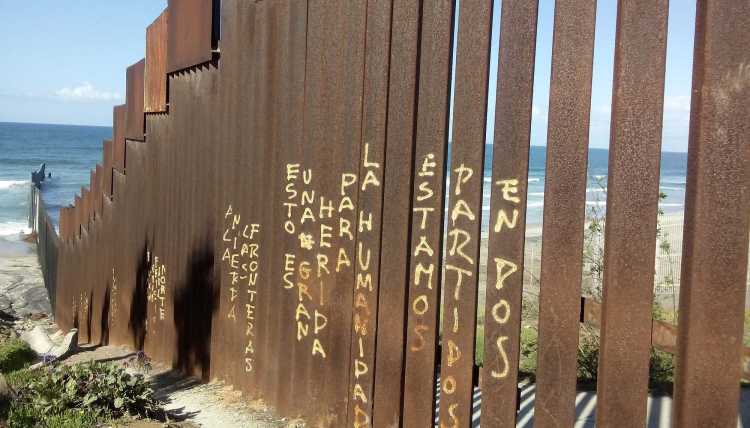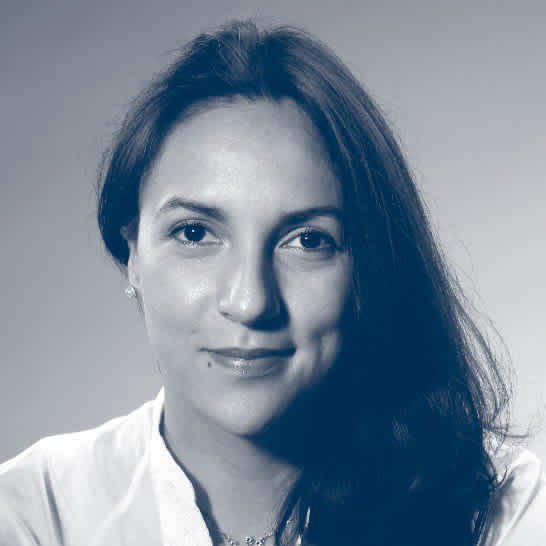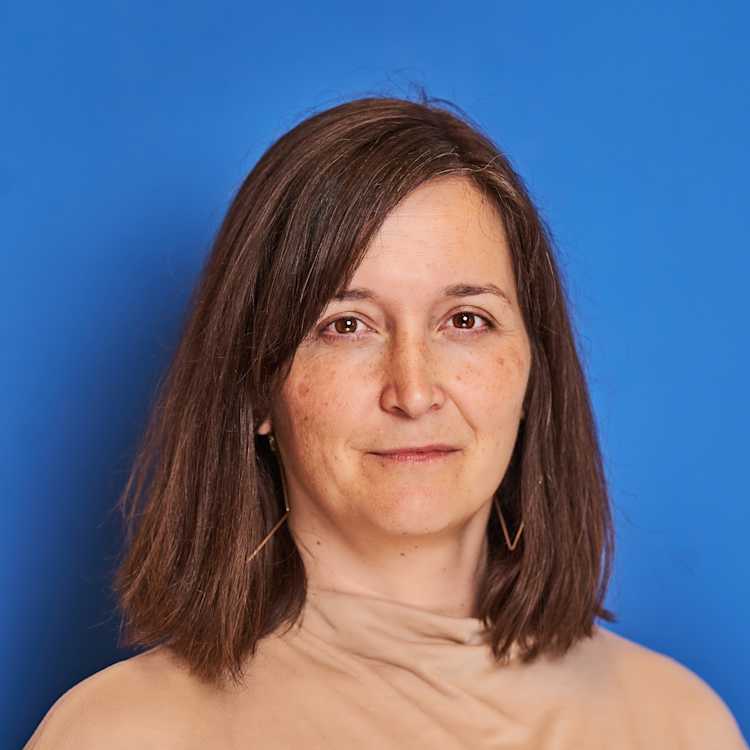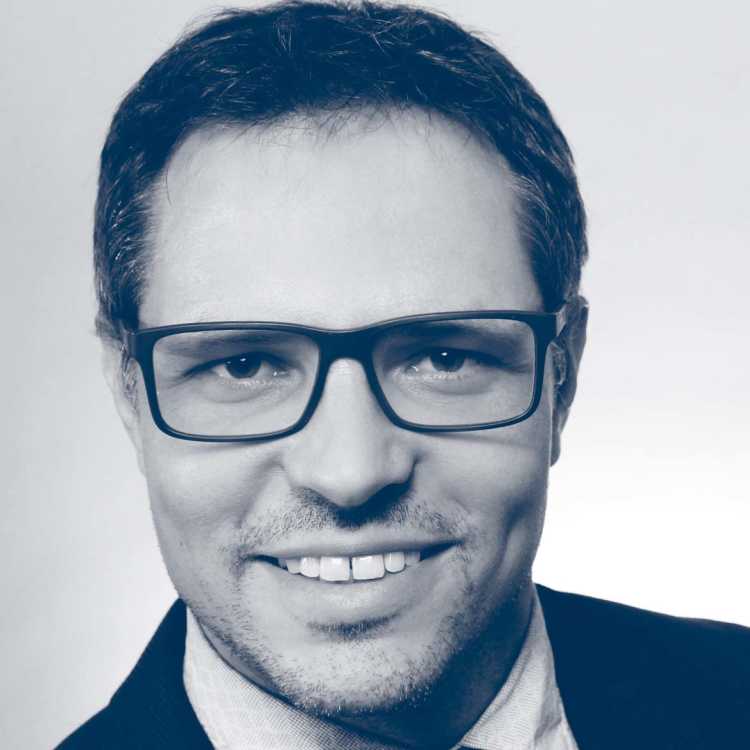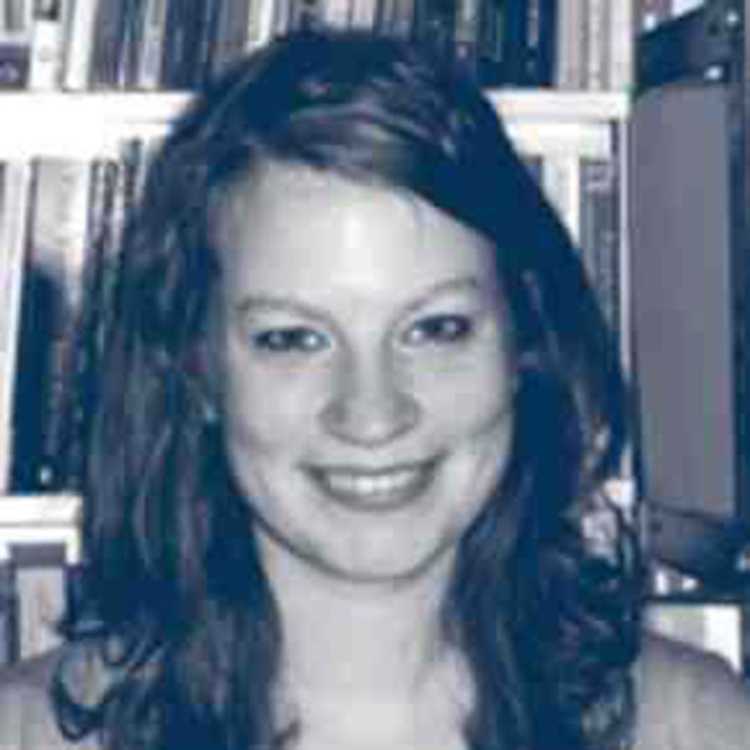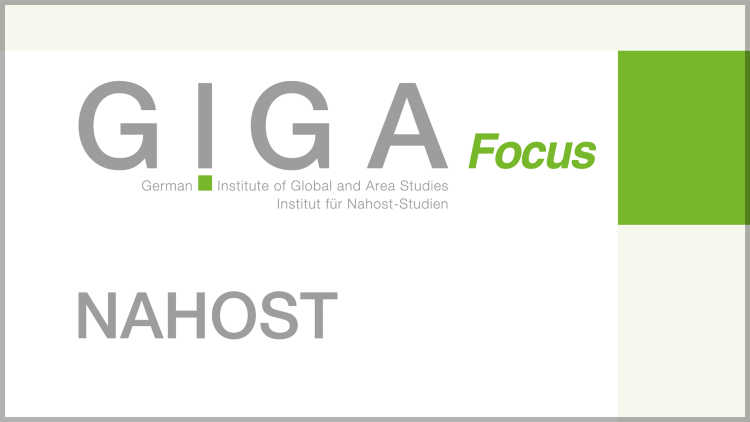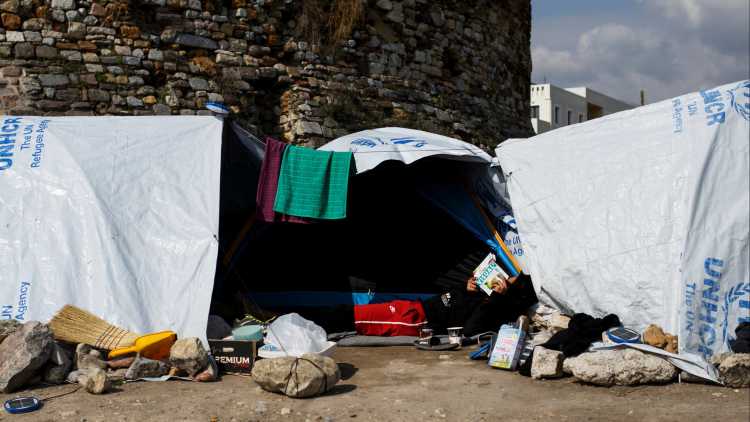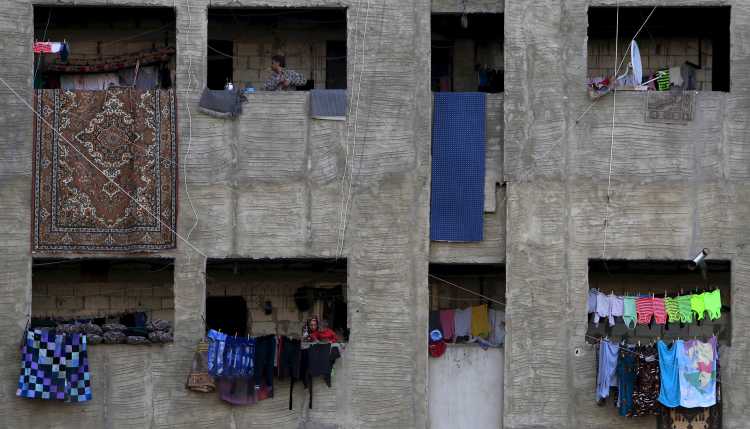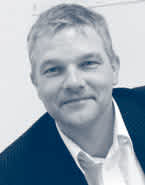- Home
- Publications
- GIGA Focus
- Syrian Refugees in Jordan: Between Protection and Marginalisation
GIGA Focus Middle East
Syrian Refugees in Jordan: Between Protection and Marginalisation
Number 3 | 2016 | ISSN: 1862-3611
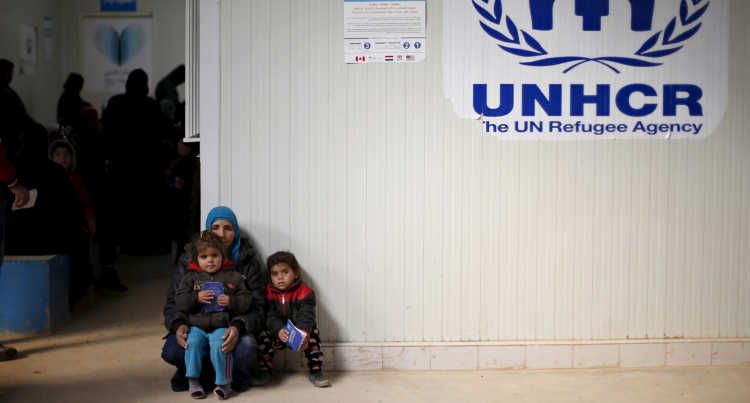
Syrians currently comprise the largest group of refugees worldwide, with the number of people who have fled the country totalling nearly five million. Although hundreds of thousands of Syrian refugees landed in Europe in 2015, the vast majority have remained in the immediate vicinity of their home country in the Middle East. In the main receiving countries, they are in urgent need of conflict-sensitive assistance.
Jordan has taken in more Syrian refugees, in relation to the number of its inhabitants, than has Turkey, but far fewer than Lebanon. From a legal point of view, these refugees in Jordan live in an uncertain limbo between temporary protection and structural marginalisation.
Within Jordan, the majority of Syrians live in the capital of Amman and in the border towns and communities of the north, while a significantly smaller portion lives in the official refugee camps. In addition, some tens of thousands of refugees are subsisting in makeshift refugee camps without any aid or infrastructure. They are located in the no man’s land between the Jordanian, Syrian, and Iraqi borders.
In northern Jordanian cities such as Mafraq, property owners and local entrepreneurs are profiting from the presence of refugees and the influx of international aid money. However, the Syrians and many Jordanians are suffering from the subsequent price increases and the tight labour and housing markets.
This situation harbours potential for conflict, since the competitive climate on the ground could deepen prejudices between Jordanians and Syrians. However, apart from a few exceptions, the existing tensions have not escalated into violence so far.
Policy Implications
The ongoing war in Syria is making the return of the refugees in the foreseeable future unlikely. Since European countries, including Germany, are not willing to grant protection to a larger number of Syrian refugees, the host countries in the region are in dire need of a substantial increase in international aid. In this context, the heterogeneous reality of Syrians living in Jordan – be it in cities, villages, or camps – should be given more consideration.
“An Era of Total Mobility”
The United Nations Refugee Agency reported in its Global Trends report of 20 June 2016 that 65.3 million people worldwide were forcibly displaced in the year 2015. This figure was thus more than 60 million for the first time in history (UNHCR 2016). Against this background, United Nations High Commissioner for Refugees Filippo Grandi spoke of “an era of total mobility” (Tagesschau 2016). Of the number of forcibly displaced persons documented by the UNHCR in 2015, almost two-thirds (40.8 million) were “internally displaced persons” (IDP), meaning that they had left their immediate home but had not crossed any state borders. At 21.3 million, one-third of the forcibly displaced persons in 2015 were refugees within the meaning of the 1951 Refugee Convention (hereinafter “the Convention”) and the 1967 Protocol because they had traversed a state border. According to the Protocol, a refugee is any person who has “a well-founded fear of being persecuted for reasons of race, religion, nationality, membership of a particular social group or political opinion [...] outside the country of his nationality, and is unable or, owing to such fear, is unwilling to avail himself of the protection of that country“ (Convention, Art. 1.2). Refugees under the international-law meaning of the Convention have a right to international protection.
This global development of a rapid increase in the number of refugees crossing state borders on the one hand and of more IDPs on the other hand echoes the trend among the largest single group of forcibly displaced persons today: Syrians after the beginning of the war in 2011. At the end of 2015, approximately 6.6 million of Syria’s total population of nearly 23 million people were IDPs (Internal Displacement Monitoring Centre 2016). Approximately 40 per cent of Syrians currently living in Syria have fled at least once, some even several times, within their home country. These figures come on top of the extremely high number of people, between 300,000 and 500,000, who have died in the war in Syria.
The UN Refugee Agency puts the number of registered Syrian refugees at the end of 2015 at 4.8 million (UNHCR 2016: 16). However, the number of unregistered refugees residing outside their home country is estimated to be significantly higher. This can be illustrated with the case of Lebanon, which currently hosts approximately 1.1 million Syrian refugees registered by the UNHCR, although other estimates put this number at 2 million. This makes Lebanon the country that has, per capita of its own population (4.5 million inhabitants), taken in the largest refugee population in the world (Lenner and Schmelter 2016) – estimates vary between one-quarter and one-half of its total population. If applied to Germany, this would correspond to some 20 to 40 million refugees.
In absolute numbers, Turkey is the main receiving country for Syrian refugees. By January 2016, the UNHCR counted nearly 2.5 million Syrian refugees in Turkey (Bank and Schmelter 2016: 103). Although the migration of hundreds of thousands Syrians in 2015 to Europe, and in particular to Germany and Sweden, was a new and significant development, it pales in comparison to the numbers of Syrian refugees taken in by Syria’s Middle Eastern neighbours.
Jordan as a Typical Host Country
In Jordan, the UNHCR had registered some 650,000 Syrians as refugees by the summer of 2016. By contrast, the monarchy under King Abdullah II has estimated the number of Syrians living in Jordan at up to 1.4 million, claiming that some 750,000 Syrians were already living in Jordan before the war began in 2011. However, this figure is likely to be too high, especially since the Jordanian authorities had never, prior to 2011, reported that three-quarters of a million Syrians were living in their country. Nor have King Abdullah II or Jordanian officials offered explanations for how this high figure of unregistered Syrians was assessed and calculated. Nonetheless, the proportion of the Jordanian population that is comprised of Syrians is currently estimated to be between one-tenth and one-sixth. With a total population of 9.2 million, Jordan has indeed taken in fewer Syrian refugees than Lebanon; however, in relative terms it has taken in more than Turkey (Lenner and Schmelter 2016).
Due to its location in the heart of the Middle East, and because of its relative political stability, Jordan has already been a host country for refugees from neighbouring Arab countries for some time. For example, the country hosts some 2.1 million refugees from Palestine, who came mainly as a result of the Arab–Israeli wars of 1948 and 1967. As a result of the Gulf War of 1990/1991 and the invasion of Iraq in 2003, hundreds of thousands of Iraqis have also temporarily or permanently settled in Jordan (Bank 2010: 171 ff.). In addition, Jordan has smaller refugee communities from other war-torn countries in the broader region, such as Sudan, Somalia, and more recently Yemen and Libya. Furthermore, hundreds of thousands of migrant workers – mainly from Egypt, Sudan, and South and Southeast Asian countries – are living in the country.
The Jordanian monarchy has signed neither the 1951 Refugee Convention nor the 1967 Protocol. With regard to the refugees from Syria, Jordan is cooperating with the UNHCR on the basis of a Memorandum of Understanding (MoU) created in 1998 and renewed in 2014. Under the MoU, the UNHCR can grant Syrians wishing to register in Jordan a temporary six-month residence permit, and thus a revocable protection status. On that basis, registered Syrian refugees in Jordan have the right to food assistance, subsidised healthcare, and limited access to state educational institutions for an initial six months. Between 2011 and 2013, the Jordanian authorities extended these six-month residence permits without major restrictions, thereby providing continued access to subsidised healthcare. However, Syrian refugees have no legal claim to such services after the six-month period. Indeed, since November 2014, healthcare for Syrian refugees staying beyond the six-month period has been provided only by non-governmental relief organisations (Carrion 2016). In addition, the Jordanian authorities can de jure expel the refugees after their six-month protection status expires. Although the government has done so only in very few cases so far, it does leave Syrian refugees in a permanent condition of uncertainty (Carrion 2016; Bank and Schmelter 2016).
The Social Structure and Distribution of Syrian Refugees in Jordan
Most Syrians in Jordan are lower- and middle-class Sunni Arabs. Since 2011, the majority of refugees have fled as families, resulting in a high number of minors. Many of them come from southern Syria, especially from the region of Daraa, where the uprising against the authoritarian regime of President Bashar al-Assad was initiated in mid-March 2011. With the expansion of the war in Syria, refugees then increasingly began coming from other parts of Syria to Jordan: from the surrounding areas of the capital Damascus (Rif Dimashq), from the area around the central Syrian cities of Homs and Hama, and from the northern city of Aleppo.
Most refugees from Syria could not be categorised as belonging to any one of the dominant political camps of the Syria conflict. If anything, there are sympathies for the secular and moderate-Islamist opposition or for the Free Syrian Army. There is no reliable data about how many of the refugees sympathise with the Assad regime or with jihadist terror organisations such as the Nusra Front (Jabhat al-Nusra), the Syrian al-Qa’ida offshoot, and the so-called Islamic State. The clear majority of Syrians living in Jordan are apparently war refugees and not “refugee warriors.”
Although few reliable data are available on their exact geographic-demographic distribution, it has been shown that in 2016 the largest group of Syrians – approximately 400,000 people – were living in the agglomeration of the capital Amman, a city of four million inhabitants. It is unclear how many of these Syrians came there as a consequence of the war and how many were already there before 2011. However, the majority of Syrian refugees have settled in the communities and refugee camps in northern Jordan near the border with Syria, especially in the governorates of Irbid and Mafraq. In some places they now constitute the majority.
The Situation in the Zaatari and Rukban Refugee Camps
Unlike the case in Lebanon, the Jordanian authorities have set up five official refugee camps for Syrians who fled after 2011: Zaatari, Azraq, King Abdullah Park, Cyber City, and Zarqa (Turner 2015; Bank and Schmelter 2016: 107–111). Together, these camps were estimated to host approximately 200,000 refugees in early summer 2016 – in other words, less than one-third of the Syrian refugees registered by UNHCR and significantly less than the estimated 400,000 living in the cities and towns in northern Jordan.
In July 2012, the largest and most well-known refugee camp – Zaatari – opened its doors just 10 kilometres from Mafraq, the capital of the governorate of the same name. In 2012 and 2013, it was home to 200,000 people, a number that has since gradually decreased to about 80,000. The Jordanian monarchy under King Abdullah II has a vested interest in preventing this number of “highly visible” refugees from shrinking, as this could lead to cuts to Jordan’s entitlement to benefits. Early on at Zaatari, a variety of international and local NGOs cooperating with the UNHCR took over the delivery of the aid programmes (Tobin 2016; Sullivan and Simpson 2016). The Jordanian authorities are responsible only for controlling access to the camps through the use of security offiers (Tobin 2016: 5). Entering and especially exiting the refugee camps has become much more difficult since 2015. Residents apprehended by Jordanian security forces outside the camp are arrested and may be deported to Syria.
In addition to the official refugee camps, a series of “wild camps” has also developed since 2014. These lie in an inhospitable desert in the no man’s land of the Jordanian–Syrian–Iraqi border triangle, far away from larger settlements or infrastructure and basic services. Together they are also referred to as “the berm,” after the piled-up sand wall stretching over nearly 100 kilometres that separates this area from Syrian territory. In July 2016, between 65,000 and 100,000 refugees were estimated to be subsisting behind the sand wall in makeshift tent settlements. Many of them have fled the fighting around the northern Syrian city of Aleppo, which has escalated massively since 2015; another large group comes from the territory of the so-called Islamic State (IS), which is becoming increasingly brutal against civilians (Rosiny 2016).
Since spring 2016, the Jordanian authorities have been letting small contingents of those stranded in the berm enter the country, albeit following intensive and lengthy searches of their person. Most of these people have been sent to the Azraq camp, which was already accommodating 50,000 Syrians at the end of June 2016 and was thus faced with an increase of 20,000 refugees within weeks. The situation within the sand wall has further deteriorated since 21 June 2016, when a terrorist attack in Rukban allegedly perpetrated by the IS killed seven Jordanian border guards. Thereafter, the Jordanian security authorities declared the whole border area a closed military zone. At the end of 2013, and again in the course of 2014, the Jordanian government had already closed the border in the western parts of the country for fear of an infiltration of jihadist terrorist organisations, in particular the IS and the Nusra Front. This de facto border closure means that Syrian refugees have had absolutely no way of getting to Jordan for over two years. In addition, after the terrorist attack, the provision supply system for those stranded in the berm collapsed. Human rights and humanitarian organisations have criticised the Jordanian government for this de facto punishment of refugees, since they have essentially fled from the same perpetrators who killed the Jordanian border guards. In spite of all this, the inhumane handling of forcibly displaced persons in the Jordanian–Syrian no man’s land continues.
The Transformation of Mafraq
For the Syrian residents of northern Jordanian cities and communities, the situation is not as acutely life-threatening as for unregistered refugees in Rukban and other wild encampments, which have developed spontaneously and very provisionally since 2014. In these cities and communities, the refugees and other cross-border effects of the Syrian war have considerably changed the socio-economic conditions of life for the people. This transformation of border areas is best illustrated using the example of Mafraq, a conservative city in northern Jordan that is based on traditional agriculture and trade with Iraq. The city’s population has doubled to 200,000 inhabitants since the beginning of the Syrian war, due to the influx of approximately 100,000 Syrians. As a result of this rapid growth, the Jordanian state has a stronger local presence there than ever before, in the form of a security force made up of the police, the gendarmerie, and secret service agents. Due to the population increase, Mafraq now needs more local government services, such as water, electricity, healthcare, and waste disposal. While the security measures are subject to the control of the authoritarian monarchy, the municipal administration of Mafraq relies heavily on international donor institutions for the financing of services. The municipality of Mafraq itself does not generate sufficient revenue – for instance, through taxation – nor does it receive even remotely enough funds from the notoriously strapped Jordanian government budget.
However, the survival of refugees is more dependent on the performance of international organisations than on the financing of municipal services, since the vast majority of Syrians living in Jordan depend on aid. Yet aid agencies often have difficulty reaching the needy with appropriate means. In addition, they often operate from Amman, which is two hours away by car. This has led to the development of assistance measures that are pragmatic but nonetheless hardly adapted to the local circumstances. For example, in Mafraq aid organisations have taken to paying the rent of large families for half a year, thereby securing them a common abode at least for a certain period of time. After the six-month period that concludes the temporary legal status of Syrian refugees, the situation is again uncertain: Will the family’s rent continue to be financed? Can the family remain in the apartment without paying rent, seeing that Syrian refugees have no legal means to earn money without a Jordanian work permit? Or must they vacate the apartment? Moreover, if a family manages to cover the rent, they still face a series of other challenges such as obtaining sufficient staple foods, health services, and basic education. These questions underscore the precarious conditions in which many Syrians in Mafraq live despite international aid.
Such international aid practices have fundamentally changed the local economy of Mafraq: First, they have led to massive price increases in rents, such that it is not uncommon for apartments to rent for five to seven times the former market price. This situation is detrimental not only to Syrians once their rental subsidy expires but also to many poorer Jordanians living in the structurally weak Mafraq. Many of them are forced to move into smaller or substandard dwellings or to share a dwelling with a greater number of people. On the other hand, the rental price bubble has produced profiteers, including the property owners, who are reaping immense profits. In Mafraq they often belong to the extended families that are politically linked with the monarchy. Landowners likewise benefit, since the resulting construction boom has developers vying to buy any leftover land. Also, restaurants and retail stores are doing better than in the past. While Mafraq was largely without cafes and restaurants before 2011, the influx of tens of thousands of Syrians has meant that many new ones have opened up.
However, the few Jordanian profiteers are juxtaposed with the many residents who feel like they are losing out as a result of this development. The less affluent Jordanians thus express their displeasure at no longer being able to afford life “in their city.” This is accompanied by prejudices about (perceived) privileges given to Syrians – for example, regarding the temporary rentals provided by international aid organisations. Furthermore, some Jordanians criticise Syrians as threatening their jobs, since the latter are willing to work for much lower wages. Indeed, many Syrians in Mafraq are pursuing informal employment without a work permit. However, the types of jobs they do, such as working as harvest helpers or in textile factories in the nearby special economic zone, are generally not taken up by Jordanians anyway. What can primarily be observed in and around Mafraq is a partial economic displacement of non-Jordanian foreign workers by Syrian workers.
Despite such prejudices against Syrians, the situation in Mafraq has thus far not escalated violently, apart from a few exceptions. Some Jordanian residents of the city had, as a protest action in 2013, imitated a small refugee camp with their own tents. But this action was directed primarily against the inaction of the Jordanian authorities. In 2015, a Jordanian killed a Syrian as a result of a theft (Sullivan and Simpson 2016: 18). However, such isolated incidents have not, so far, led to the escalation of violence between groups. This can be largely attributed to the massive presence of Jordanian security forces. At the same time, many Jordanians are also empathetic towards Syrians, knowing that they are victims of a brutal war and have experienced great suffering.
Ramping Up Aid, Recognising Local Differences
In summary, it can be said that the arrival of many Syrians and the practices of international refugee aid have led to a strong socio-economic transformation in northern Jordan. With the exception of a few local profiteers, many Jordanians have been structurally marginalised. This situation harbours a medium-term potential for conflict, although this has not yet escalated into violent actions.
The ongoing war in Syria is making the return of the refugees impossible in the foreseeable future. Against this background, the refusal of European countries, including Germany, to grant protection to a larger number of Syrian refugees is highly problematic and deplorable, as is the fact that the rich Gulf countries have only received a very small number of Syrian refugees. Thus, substantial increases in international financial assistance for the main host countries Jordan, Lebanon, Turkey, and also Iraq are imperative. When implementing such measures, efforts should be made to ensure that, unlike in the past (such as at the “Supporting Syria and the Region” conference of 4 February 2016 in London), money is not only promised but also actually paid. The underfunding of the UNHCR and the UN World Food Programme in 2015, as a result of which relief efforts in Jordan and Lebanon had to be reduced in the short term by up to 30 per cent, are cautionary examples. The reduction in aid payments led to a significant worsening of the provision of services to the refugees in the host countries and contributed to the decision of many Syrians in the spring and summer of 2015 to embark towards Europe despite the perilous escape routes.
A significant increase in the quantity and dependability of the international aid funds is a necessary condition for the sustainable improvement of the refugees’ situation in the Middle Eastern host countries. However, what is also important is to adapt the provision of services to the local conditions and the heterogeneous reality of life on the ground. While the Syrians living in the unofficial camps such as Rukban require immediate emergency aid and basic supplies for survival, Syrians in the Zaatari camp need, aside from basic services, more support for education and training. Syrian children and young people in cities like Mafraq need to be better integrated into the local school system, and adult Syrians must be given a work permit and the authorisation to engage in regulated, legal labour in order to liberate themselves from dependence on precarious relief efforts in the medium term. International donor agencies should focus here on strengthening their assistance to Jordan.
Undertaking such efforts will necessitate better cooperation between international donors, Jordanian state institutions, and local partners. Indeed, only orchestrated collaboration will allow the parties involved to accomplish the mammoth task of providing for Syrian refugees in Jordan.
Footnotes
References
Bank, André (2010), Regionale Kriege und lokale Ordnungen im Nahen Osten: Irak, Palästina und neue Herrschaftsformen in Jordanien, Inauguraldissertation, Philipps-Universität Marburg, FB Gesellschaftswissenschaften und Philosophie, online: http://archiv.ub.uni-marburg.de/diss/z2013/0725/pdf/dab.pdf (19. Juli 2016).
Bank, André, und Susanne Schmelter (2016), Auf Dauer in der Schwebe? Syrische Flüchtlinge in der Türkei und im Libanon, in: Margret Johannsen et al. (Hrsg.), Friedensgutachten 2016, Münster: Lit, 101-113.
Carrion, Doris (2016), Düstere Aussichten: Syrische Flüchtlinge in Jordanien, in: Bundeszentrale für politische Bildung (Hrsg.), Länderprofil Jordanien, Bonn: bpb, online: www.bpb.de/gesellschaft/migration/laenderprofile/230886/syrische- fluechtlinge?p=all (19. Juli 2016).
Internal Displacement Monitoring Centre (2016), Syria IDP Figures Analysis, online: www.internal-displacement.org/middle-east-and-north-africa/syria/figures-analysis (18. Juli 2016).
Lenner, Katharina, und Susanne Schmelter (2016), Syrian Refugees in Jordan and Lebanon: between refuge and ongoing deprivation?, in: Institut Europeu de la Mediterrània (Hrsg.), IEMed Mediterranean Yearbook 2016, Barcelona: IEMed, i.E.
Sullivan, Denis, und Charles Simpson (2016), Oasis in the Desert? Coproduction and the Future of Zaatari, in: Middle East Report, 278, 12-19.
Tagesschau (2016), Interview mit UN-Flüchtlingskommissar Grandi „Eine Ära totaler Mobilität“, online: www.tagesschau.de/ausland/interview-grandi-101.html, 20.06.2016 (18. Juli 2016).
Tobin, Sarah A. (2016), NGO Governance and Syrian Refugee “Subjects” in Jordan, in: Middle East Report, 278, 4-11.
Turner, Lewis (2015), Explaining the (Non-)Encampment of Syrian Refugees: Security, Class, and the Labour Market in Lebanon and Jordan, in: Mediterranean Politics, 20, 3, 386-404.
UNHCR (2016), Global Trends. Forced Displacement in 2015, 20. Juni, New York: United Nations High Commissioner for Refugees, online: www.unhcr.org/576408cd7 (19. Juli 2016).
General Editor GIGA Focus
Editor GIGA Focus Middle East
Regional Institutes
Research Programmes
How to cite this article
Bank, André (2016), Syrian Refugees in Jordan: Between Protection and Marginalisation, GIGA Focus Middle East, 3, Hamburg: German Institute for Global and Area Studies (GIGA), http://nbn-resolving.de/urn:nbn:de:0168-ssoar-48143-3
Imprint
The GIGA Focus is an Open Access publication and can be read on the Internet and downloaded free of charge at www.giga-hamburg.de/en/publications/giga-focus. According to the conditions of the Creative-Commons license Attribution-No Derivative Works 3.0, this publication may be freely duplicated, circulated, and made accessible to the public. The particular conditions include the correct indication of the initial publication as GIGA Focus and no changes in or abbreviation of texts.
The German Institute for Global and Area Studies (GIGA) – Leibniz-Institut für Globale und Regionale Studien in Hamburg publishes the Focus series on Africa, Asia, Latin America, the Middle East and global issues. The GIGA Focus is edited and published by the GIGA. The views and opinions expressed are solely those of the authors and do not necessarily reflect those of the institute. Authors alone are responsible for the content of their articles. GIGA and the authors cannot be held liable for any errors and omissions, or for any consequences arising from the use of the information provided.



